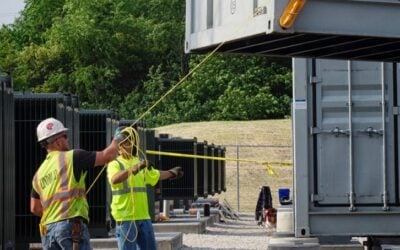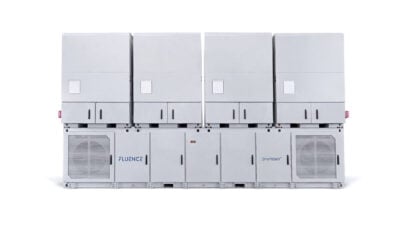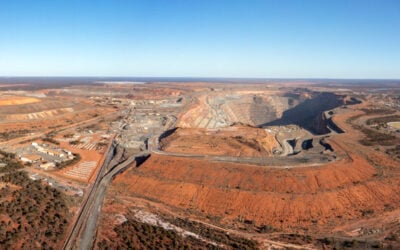
Technology provider and system integrator Wärtsilä has been selected to provide its Quantum High Energy storage technology for a 300MWh battery energy storage system (BESS) in South Australia.
The BESS will be supplied to Canadian-headquartered developer Amp Energy for the first stage of its Bungama 150MW/300MW 2-hour duration system. Wärtsilä said the order was booked in September 2024.
As with all previous Wärtsilä’s BESS technologies, it will run on the company’s GEMS energy management platform.
Amp Energy’s project is situated in the Mid-North region of South Australia. The company hopes to begin construction this month, with commercial operations slated for the first quarter of 2026. In September 2023, Amp Energy Australia secured an agreement to connect the project to South Australia’s high-voltage network with grid operator and owner ElectraNet.
Try Premium for just $1
- Full premium access for the first month at only $1
- Converts to an annual rate after 30 days unless cancelled
- Cancel anytime during the trial period
Premium Benefits
- Expert industry analysis and interviews
- Digital access to PV Tech Power journal
- Exclusive event discounts
Or get the full Premium subscription right away
Or continue reading this article for free
Wärtsilä will provide a long-term service agreement for the project and will work closely with Balance of Plant (BOP) contractor Enerven in what is their fourth collaboration.
Andrew Tang, vice-president of energy storage and optimisation at Wärtsilä Energy, highlighted that the project will help create a more resilient energy grid whilst supporting South Australia’s aims to achieve 100% renewable energy by 2027.
Daniel Kim, president of Australia at Amp Energy, said that the Bungama BESS is the first of its projects to reach this milestone, adding that Wärtsilä’s “strong local track record of delivering high-performance energy storage solutions” will aid in its development.
The Gridsolv Quantum High Energy supports high-energy density customers in developing their projects. The product was designed for Wärtsilä to capitalise on the market trend of customers preferring more compact solutions with smaller footprints.
The High Energy unit is an addition to the existing Gridsolv Quantum range of Wärtsilä large-scale BESS solutions. In March 2024, the company released its new Quantum2 range, a packed 4MWh per 20-foot unit, designed to meet the “varying needs” of customers. The product aims to “provide cost and performance benefits for large-scale (2- to 8-hour applications) energy storage deployments,” a Wärtsilä ES&O spokesperson previously told Energy-Storage.news.
Last month, Wärtsilä added to this product range with Quantum3, a 5MWh, 20-foot container BESS, designed to achieve “an optimal balance between energy density and weight”.
Wärtsilä’s Quantum High Energy sees increased deployment
As previously reported by Energy-Storage.news, Wärtsilä launched its GridSolv Quantum High Energy in November last year, touting its use of 306Ah lithium iron phosphate (LFP) cells, which enable 9% higher energy density than the previous iteration of its GridSolv Quantum solution.
The technology will be first deployed at a 300MW/600MWh project in Scotland, UK, being pursued by Zenobē Energy, a developer and investor in energy storage and electric vehicle (EV) charging solutions.
Wärtsilä revealed earlier this year (25 July) that it will deploy its Quantum High Energy technology at Origin’s Eraring Power Station in New South Wales, for stage two of its development.
This stage will see an additional 240MW/1030MWh grid-forming BESS constructed, bringing the overall capacity to over 2GWh with the new 4-hour duration system. This complements Origin’s existing 460MW/1073MWh 2-hour duration BESS currently under construction as part of stage one of the overall project.
Wärtsilä revealed that the Eraring BESS will operate in virtual synchronous machine (VISMA) mode. This will enable short-circuit current capabilities, such as reactive current, droop control, and synthetic inertia, to support grid stability and security. This will be achieved via Wärtsilä’s GEMS energy management platform and advanced inverter hardware.





